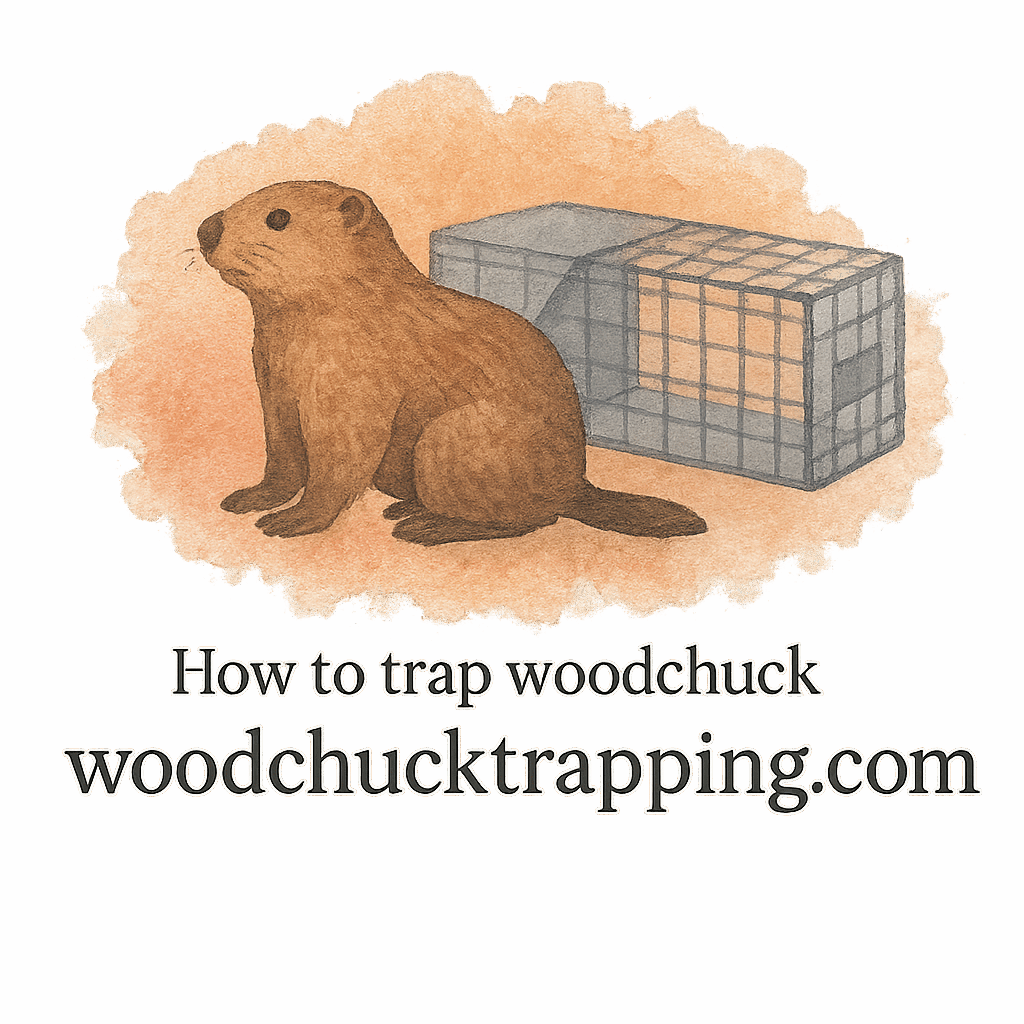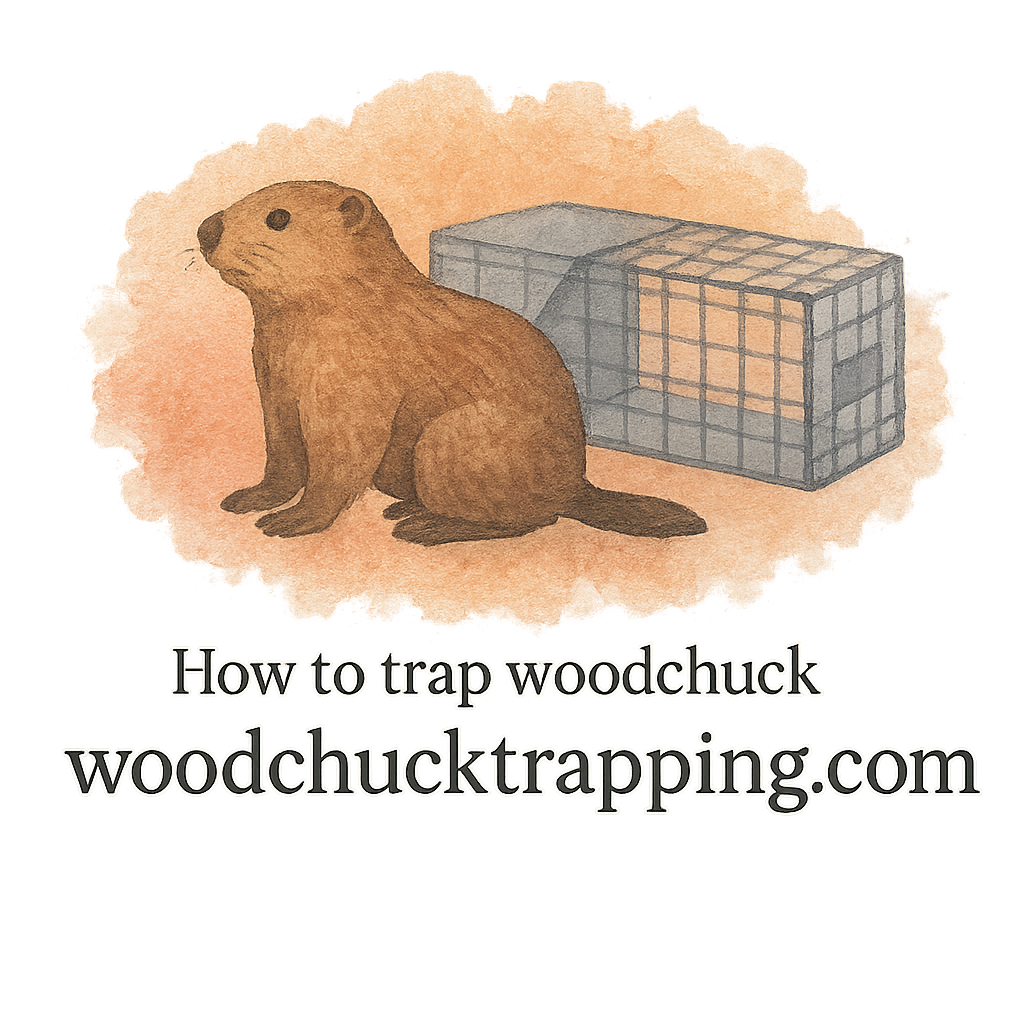Introduction: Why Woodchuck Trapping Techniques Matter
If you’ve ever looked out at your yard only to see a woodchuck (a.k.a. groundhog) tearing through your garden like it owns the place, you know why learning effective woodchuck trapping techniques is so important. These little diggers may look harmless, but they can wreak havoc on your lawn, garden beds, and even structural foundations.
The good news? With the right approach, even beginners can successfully trap woodchucks without frustration. In this guide, we’ll dive into five essential things every beginner must know, along with advanced tips, safety considerations, and long-term prevention strategies.
1. Understanding Woodchuck Behavior Before Trapping
Before you set a trap, you’ve got to think like a woodchuck. Knowing their patterns and habits is the difference between success and wasted effort.
Recognizing Signs of Infestation
Look for signs of woodchuck activity. These might include chewed plants, dirt mounds, and tunnels leading to their underground burrows. The sooner you spot these, the quicker you can act before the damage gets out of control.
Identifying Burrows and Yard Damage
Woodchucks create extensive burrows with multiple entrances. These tunnels can cause yard damage and even weaken structures. Marking where these are located helps in placing your traps effectively.
Why Behavior Matters for Trapping Success
Woodchucks are creatures of habit. They’ll often use the same paths repeatedly, making those areas prime spots to place traps. Understanding this natural routine sets the foundation for any successful trapping effort.
2. Choosing the Right Woodchuck Trapping Equipment
Having the right tools is half the battle. The wrong trap can mean wasted time and a very clever groundhog laughing at you from a distance.
Compact Traps vs. Larger Models
When dealing with a small yard or limited space, compact traps are your best bet. Larger properties, however, might require multiple or bigger traps for efficiency.
Must-Have Trap Gear and Tools
Check out the full list of trap gear and equipment reviews before purchasing. You’ll need durable traps, handling tools, and a few backup essentials like trap scent to mask your human odor.
Gloves and Safety Essentials
Never underestimate the importance of gloves and safety gear. They not only protect you but also prevent your scent from contaminating traps.
3. The Role of Baiting and Luring in Trapping
Think of baiting as the art of persuasion. You’re convincing a cautious woodchuck to walk right into your trap.
Best Baits and Scents for Success
Popular baits and lures include apples, leafy greens, and strong-smelling scent baits. Adding a lure boosts effectiveness by attracting the animal from further away.
Placement Strategies That Attract Woodchucks
Position traps along signs of travel routes, near burrows, or next to areas of heavy plant damage. Remember, location is just as important as bait choice.
Common Mistakes with Lures and Baits
Using too much bait, placing it incorrectly, or skipping trap scent masking can ruin your setup. Subtlety wins every time.

4. Safety and Legal Considerations in Trapping
Trapping isn’t just about catching the animal—it’s about doing it safely and legally.
Local Laws and Regulations
Every state has different rules. Always review your area’s laws and safety guidelines before setting traps.
Humane Trapping and Handling Techniques
Using humane techniques ensures you’re trapping responsibly. Proper handling protects both you and the animal.
Protecting Yourself and the Animal
Remember: woodchucks may bite when scared. Always use proper tools and never try to free a trapped animal with your bare hands.
5. Prevention and Long-Term Damage Control
Catching one woodchuck won’t guarantee peace forever. You’ll need preventive strategies.
Keeping Woodchucks Out After Trapping
Install barriers and reinforce weak points around your property. Learn about damage prevention methods that actually work.
Yard and Garden Protection Tips
Fencing, repellents, and consistent yard maintenance reduce the risk of a new infestation.
Maintenance Against Future Infestations
Even after trapping, regular monitoring is key. Look out for new burrow holes or signs of digging so you can act quickly.
Advanced Woodchuck Trapping Techniques for Beginners
Once you’ve mastered the basics, you can refine your approach.
How to Trap in Minimal Space or Small Yards
Trapping in minimal space requires clever positioning and compact traps. In a small yard, precision is everything.
Adjusting Techniques for Different Conditions
Wet soil, rocky terrain, or dense vegetation can all affect trap placement. Adapting your trapping techniques keeps you one step ahead.
Common Mistakes Beginners Make with Woodchuck Trapping Techniques
Everyone makes mistakes at first—but you can avoid the most common ones.
Misusing Equipment or Bait
Skipping proper trapping essentials or misusing tools can lower your success rate.
Ignoring Safety Guidelines
Failing to follow safety rules puts you at risk. Always read instructions and wear protective gear.
Conclusion
Mastering woodchuck trapping techniques doesn’t happen overnight, but with the right knowledge, equipment, and strategy, even beginners can succeed. By understanding woodchuck behavior, using the right traps, perfecting baiting, respecting laws, and practicing prevention, you’ll protect your yard and keep these critters under control for good.
Ready to take the next step? Dive deeper into proven trapping techniques and explore expert tips to stay ahead of woodchucks once and for all.
FAQs
Q1: What’s the best bait for woodchuck trapping techniques?
Apples, leafy greens, and strong-scented vegetables work best. Adding lures increases effectiveness.
Q2: Are woodchuck trapping techniques safe for pets?
Yes, but you should monitor traps closely and place them where pets can’t access.
Q3: Can I trap a woodchuck without bait?
It’s possible by placing traps along travel paths, but baiting usually boosts success.
Q4: How do I know if I have more than one woodchuck?
Look for multiple burrows or separate areas of yard damage.
Q5: Are humane woodchuck trapping techniques effective?
Yes. Humane traps can be just as effective as traditional ones when used correctly.
Q6: How long does it take to trap a woodchuck?
It varies, but most trappings occur within a few days if the trap is set correctly.
Q7: What should I do after catching a woodchuck?
Follow local laws for relocation or contact wildlife services for guidance.


